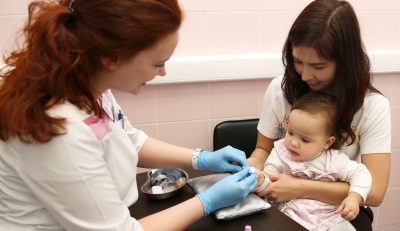Plasma cells in the blood of a child
Due to the clinical analysis of the child’s blood, the doctor can judge his health by evaluating many indicators. One of the most important is the leukocyte formula, which is the percentage of different types of white blood cells. Among them are plasma cells, the level of which often rises with inflammation or infection. How many such cells should be normal in a child and for which diseases they are detected in an increased amount?
Norm in children
Plasma cells, another name for which is "plasma cells", are one of the types of white blood cells. Their main task is the formation of antibodies in the child’s body.
Such cells are formed from lymphocytes, in particular from B cells. As soon as these lymphocytes receive signals about the presence of antigen, they move into lymph nodes and are converted into plasma cells.
The duration of their life is only a few days, but there are also memory cells that reside in the bone marrow and lymph nodes for many years. They are activated when the child is confronted with some pathogens again, thus providing long-lasting immunity.
In the analysis of adult blood plasma cells are usually absent. They are represented by single cells per thousand leukocytes, so they can be missed in normal counting. Also, they are normally not in the analysis of the blood of a newborn, but already from the fifth day after birth, from 0.25 to 0.5% of plasma cells are determined in the leukocyte formula of babies. At this level, from the total number of white blood cells they are diagnosed in older children to adolescence.
Increase in the number of plasma cells
In addition to many viral diseases, an increase in the level of such leukocytes is noted when:
- Serum sickness.
- Sepsis.
- Infection with staphylococci or streptococci.
- Infection with Candida.
- Autoimmune diseases.
- Tuberculosis.
- Exposure to ionizing radiation.
- Oncological pathology.
A high plasma cell level may indicate a multiple myeloma in a child, also called a plasmocytoma. This pathology is a malignant neoplasm in the bone marrow, consisting of plasma cells that have mutated into malignant blood cells (myeloma). The disease is manifested by pain in the bones, fractures, bleeding, the formation of blood clots. It occurs more often in people older than 40 years, but occasionally it can appear in children.
What to do when plasma cells increase in a child
If, after donating blood, the leukocyte formula showed a large percentage of plasma cells in a child, parents should take an analysis form and go along with their daughter or son to the pediatrician. The doctor will evaluate all leukocyte formula, other parameters of the general blood test, as well as existing complaints and past diseases.If necessary, he will appoint a number of additional examinations. As a result, it will be clear why plasma cells turned out to be more than normal, and after treating the underlying disease, such cells will decrease to a normal rate.













